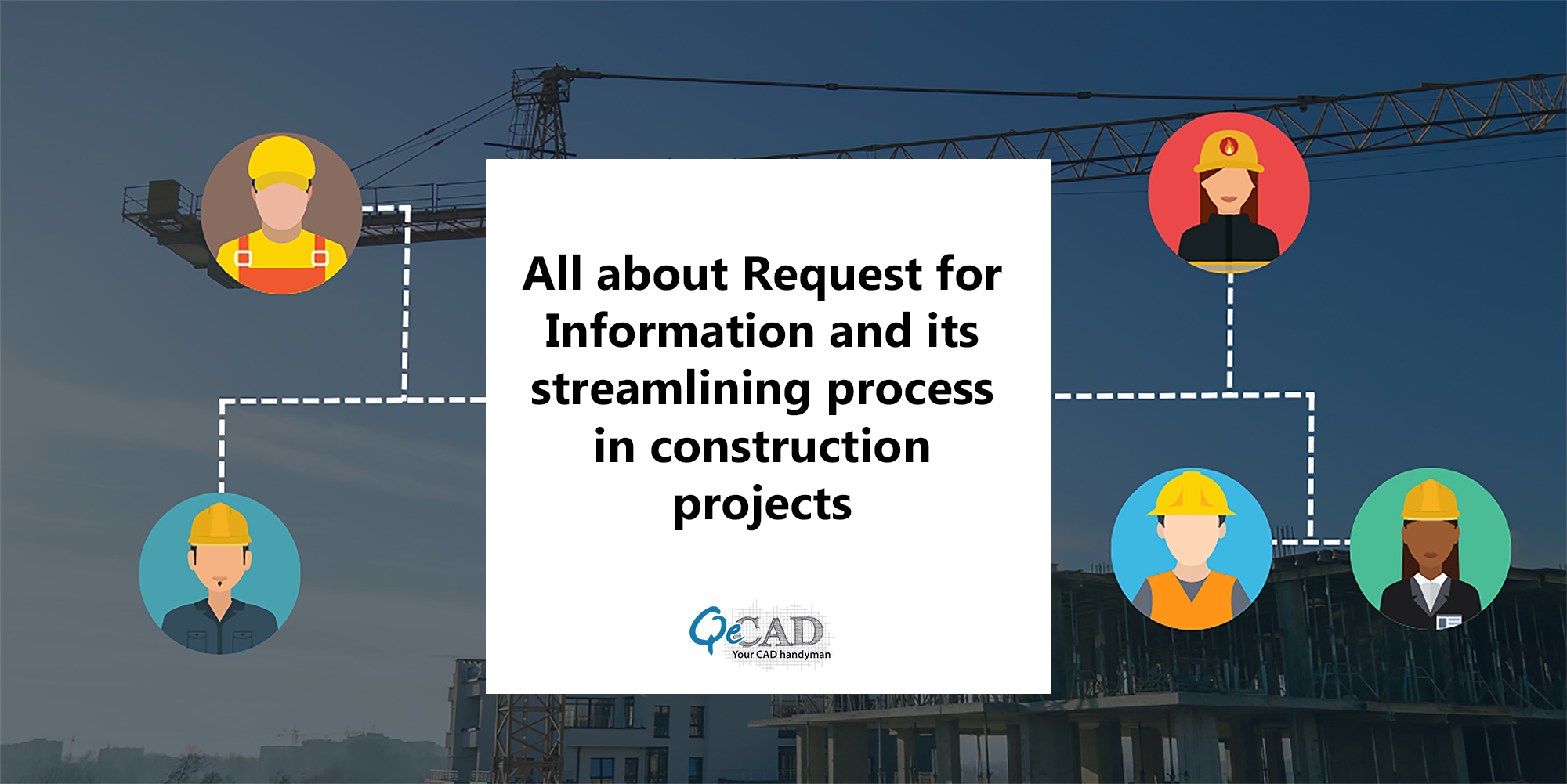
Introduction
A written document that interested parties send in response to a query or problem regarding the specifics of something like an endeavor is referred to as an RFI.
RFIs can rarely appear even at the time of bidding stage, yet they’re more typical throughout the building stage as well as pile up over the course of the endeavor.
RFIs do seem to be structured since they’re now a component of the construction record keeping as well as occasionally lead to adjustments being made to the tender document, specifically the construction schematics, blueprint files, or requirements.
The proposal’s expense plus longevity may rise due to the addition of the instructions, concept modifications, or revisions to that same project ’s objectives. As a result, the RFI procedure ought to be implemented in accordance with stringent rules but also be considered a legitimate as well as useful channel of communication.
RFI in construction industry
Request for Information is indeed a type of interaction among customers and businesses to elevate basic questions about certain construction insight. This aids in the resolution of whatever issues that the initiative may have encountered that required support from the customer side.
RFIs must be completed beforehand and are accessible to the design professionals all across the construction process. RFIs serve the purpose of construction works whenever it’s necessary to provide information difficulties as notations as well as corroborate them by receiving feedback specifics or configuration well over Systemic Manufacturing Designs, Construction Drawing Offerings, as well as MEP Construction Drawings.
RFIs have been typically utilized to specify design features or selection of materials in conjunction to records including Building Plans, Requirements, Contract Provisions, etc.
How Can Individuals Make The Request for Information (RFI) Processes Better?
There are numerous methods for enhancing this same RFI system, however the most important involves employing a basic framework that could contribute to making the process simpler and quicker while involving critical data for such customers to respond over feedback difficulties.
Software system could really process RFIs in an increasingly organized and appropriate way, allowing staff easier access to files. Addressing RFIs as well as reacting to notations rapidly would then offer you an advantage on your rivals and boost your likelihood of being hired.
Sophisticated and newer innovations have been employed in construction works to enhance the effectiveness of building construction practices and construction administration solutions, that also emphasis primarily on handling this RFI process associated with the initiatives.
The communication process avoids postpones, errors, and indeed the distress of not getting the job done on schedule and even on budget. A third-party organization should be capable of accessing the data via the operating system, as well as any smart phones which thus enable the group to introduce additional RFI notations from everywhere.
The following are a few recommendations for efficiently managing the Request for Information procedure during building works. RFI systems minimize the dangers accumulated throughout works involving numerous stakeholders and specializations by streamlining as well as improving RFI processes.
- Within the operating system, generate an RFI format and underline the domains needed to categorize and limit the suggestions.
- While precise details are required, search for it to ensure that it’s able to receive a meaningful answer. If queries seem to be obscure, you may not receive the predictable output.
- Allow sufficient opportunity for distributors or subcontractors to respond to data requests.
- If indeed the customer requests documentation, the teammates should react within the timeframe stipulated by the agreement.
- To rectify RFI difficulties, several documentations like handbooks, requirements, schematics, and so forth must be shared with the RFI processes.
- Establish an RFI record to keep apprised of the current state of RFIs. Necessary amendments during the RFI processes are documented having a passcode, formation date, and description.
- If somehow the RFI reports reaction fulfills the criteria, the RFI classification should be finished.
- RFI teammates should be coached to append project documentation like models, drawings, specifications, handbooks, and so forth to their RFIs. Submit RFIs to group participants to guarantee they are obtained.
- Software is used to standardize and regulate RFI processes using suitable approaches.
- It’s indeed necessary to determine whether the response provided becomes sufficiently accurate. This even aids in determining which answers seem to be critical to the project’s timetable and finances.
- When a consequence has been observed, the record would be needed to alter the possible changes as well as share it to your group.
- Lower the total amount of RFIs received by conversing including all stakeholder groups. Teammates should be entangled and in constant contact regarding RFIs.
Conclusion
The discussion concludes that the Request for Information (RFI) process offers superior data to an assortment of stakeholders and specialisms associated with construction projects. Efficacious RFIs can provide answers rapidly and simply & rectify questions. RFIs ought to be considerably less necessary thanks to Building Information Modelling (BIM), thereby offering availability to superior, more complete, and more synchronized information for the full entire project.
The RFI processes should be meticulously orchestrated in order to remain effective. Postponed and insensitive RFIs can impact the amicable connection between the user as well as the construction company but also frequently result in an infringement of such project’s success.
Composing RFI notes to clients on project challenges saves time, money, and enhances overall quality throughout the construction project, which is effectively handled by the operating system.
